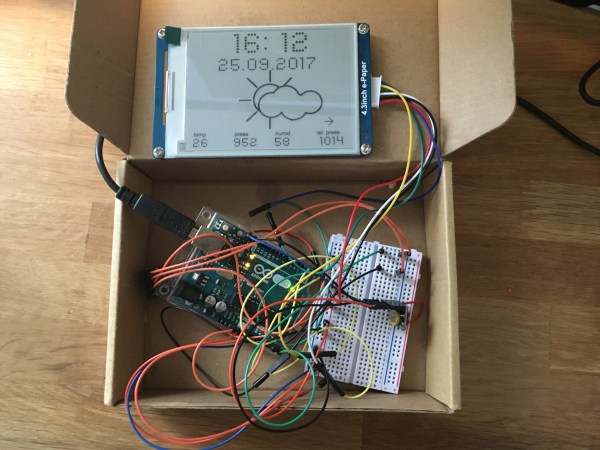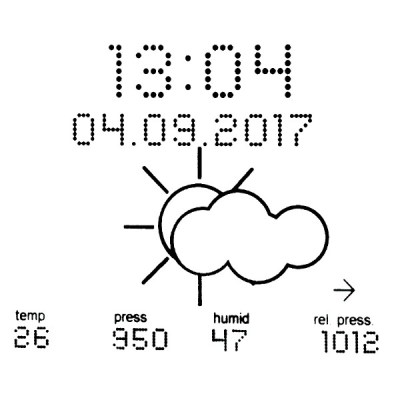There are three great enabling technologies of the last twenty years. The first is lithium batteries that hold a lot of juice. Quadcopters wouldn’t exist without them, and the Tesla Model S wouldn’t either. The second is crazy powerful brushless motors. Here, again, quads wouldn’t exist without them, but we’re also getting smaller, torquier, and more powerful motion platforms.
 The third great enabling technology in recent memory is LEDs. Remember when the PlayStation 2 came out, and everyone was amazed by the blue LED? That blue LED won a Nobel Prize. Now, we have LED light bulbs, LEDs in any color of the rainbow, powerful UV LEDs, and bazillion candela flashlights. LEDs are awesome.
The third great enabling technology in recent memory is LEDs. Remember when the PlayStation 2 came out, and everyone was amazed by the blue LED? That blue LED won a Nobel Prize. Now, we have LED light bulbs, LEDs in any color of the rainbow, powerful UV LEDs, and bazillion candela flashlights. LEDs are awesome.
For this week’s Hack Chat, we’re going to be talking all about LEDs. Everything from strips to rings, discrete to waterproof, COBs, weird colors, and everything in between. If you’re looking to replace your workshop lighting with LEDs, this is the Hack Chat for you. If you’ve ever wondered about the quality of LEDs, and the price-performance ratio, this is for you. This is all about blinky bling.
Our guest for this week’s Hack Chat will be [Metalnat], founder of the Burbank MakerSpace, a recent resident of the Supplyframe DesignLab where he designed a VR controller, and worked on Crane, a flapping automaton that glided over the playa at this year’s Burning Man. During this Hack Chat, we’ll be talking about LEDs, including installation methods, types of LEDs, suppliers, and LED manufacturing methods.
This is a Hack Chat, so we’re taking questions from the audience. Here’s a spreadsheet we’ll be using to guide the discussion.
Here’s How To Take Part:
 Our Hack Chats are live community events on the Hackaday.io Hack Chat group messaging. This Hack Chat will be going down noon, Pacific time on Friday, September 29th. Sidereal and solar getting you down? Wondering when noon is this month? Not a problem: here’s a handy countdown timer!
Our Hack Chats are live community events on the Hackaday.io Hack Chat group messaging. This Hack Chat will be going down noon, Pacific time on Friday, September 29th. Sidereal and solar getting you down? Wondering when noon is this month? Not a problem: here’s a handy countdown timer!
Click that speech bubble to the right, and you’ll be taken directly to the Hack Chat group on Hackaday.io.
You don’t have to wait until Friday; join whenever you want and you can see what the community is talking about.



 [Fandonov] has created
[Fandonov] has created 

 Originally conceived as a sport wheelchair, it has now evolved to answer different needs, due to feedback from the users and the community involved in the project. [Alessio] designed the project to be built from materials and resources easily available to any DIY maker at today’s Fab Labs and Makerspaces. The team have provided a detailed BOM to help procure all the required materials, instruction manual and drawings for assembly, and all the CAD files with customization instructions. Already, teams in Ecuador, India and Italy have replicated and built their own version of the TooWheel wheelchair. This confirms that the project is well documented and allows anyone around the world to download the plans and follow instructions to build their own wheelchair.
Originally conceived as a sport wheelchair, it has now evolved to answer different needs, due to feedback from the users and the community involved in the project. [Alessio] designed the project to be built from materials and resources easily available to any DIY maker at today’s Fab Labs and Makerspaces. The team have provided a detailed BOM to help procure all the required materials, instruction manual and drawings for assembly, and all the CAD files with customization instructions. Already, teams in Ecuador, India and Italy have replicated and built their own version of the TooWheel wheelchair. This confirms that the project is well documented and allows anyone around the world to download the plans and follow instructions to build their own wheelchair.


















